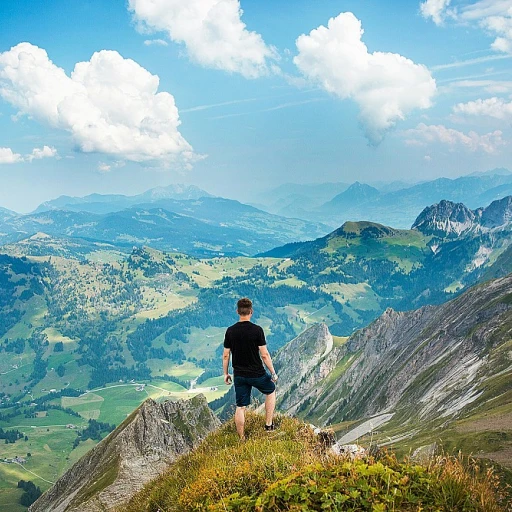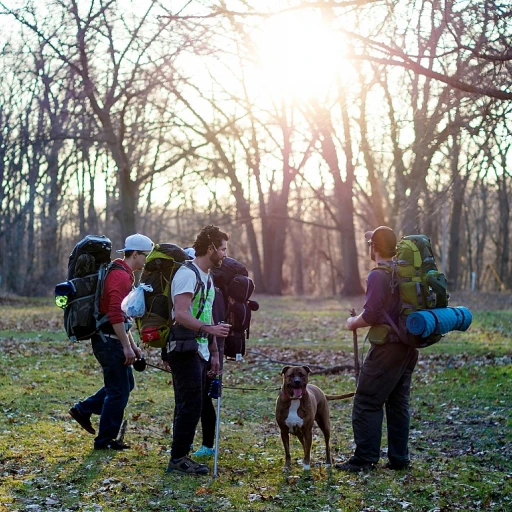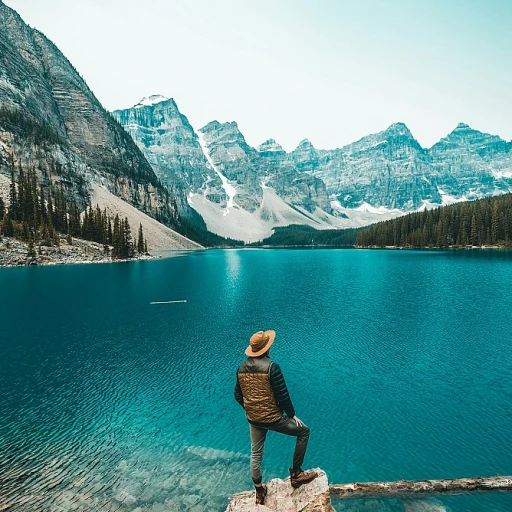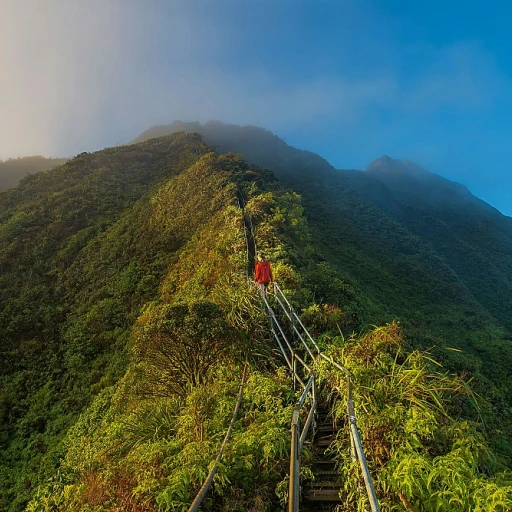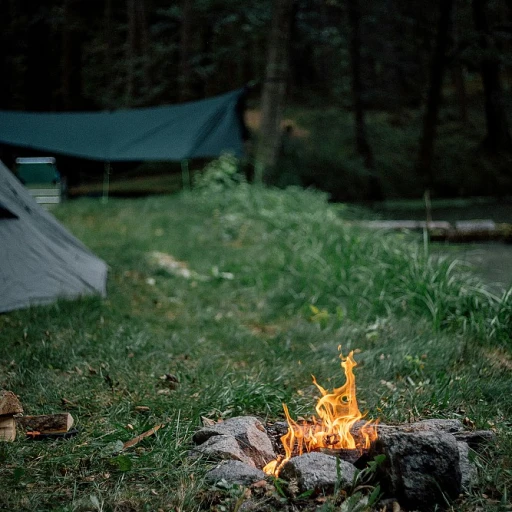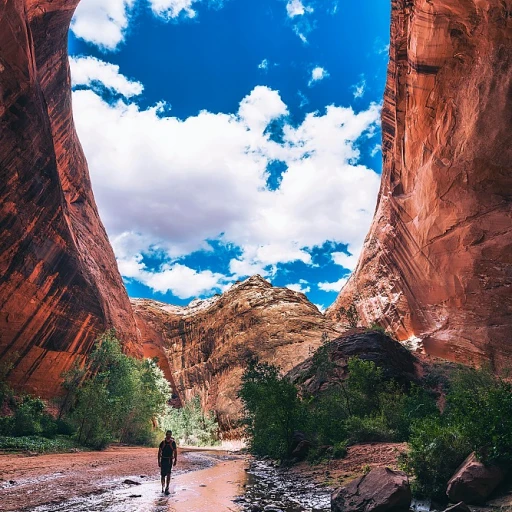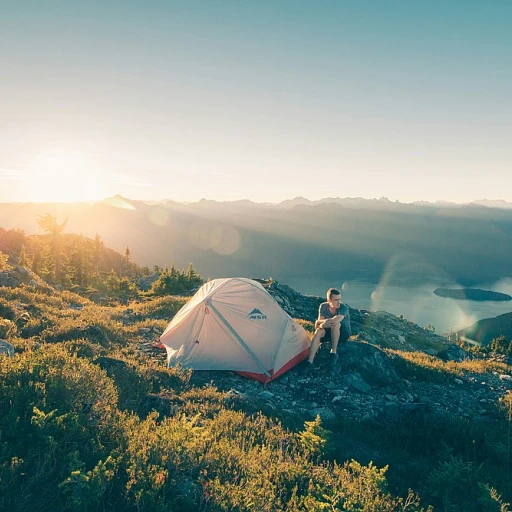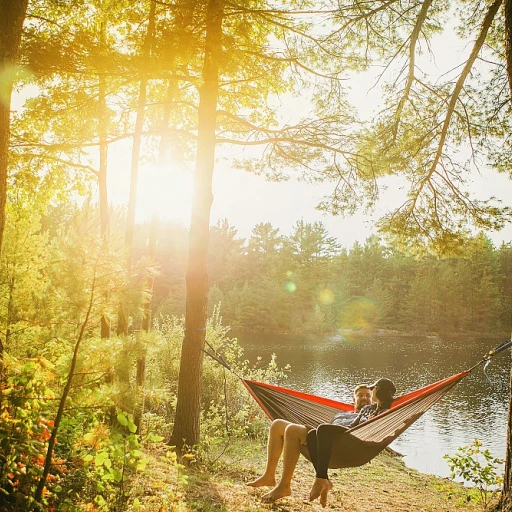The importance of choosing the right hiking socks
What's the big deal with hiking socks?
Choosing the right socks for hiking ain't just about colors or brands. It's a serious business, especially when your feet are gonna be putting in some serious mileage. A good pair can mean the difference between a joyful trek and a miserable, blister-filled experience.
Why right socks matter
If you’re hitting trails regularly or tackling lengthy adventures, you need specialized gear for comfort and protection. Quality socks like merino wool socks or cushioned crew socks are designed to keep feet dry, provide warmth, and prevent blisters, no matter the season. They add that extra layer of cushion to absorb the shocks of uneven terrain.
As an example, a study from the Journal of Athletic Training found that hikers who wore moisture-wicking socks experienced significantly fewer blisters, around 40% reduction compared to those in regular cotton socks. Expert hikers like Mel Madden swear by high-grade materials like merino wool for their moisture-wicking properties.
Comfort and function in each step
Hiking socks serve multi-purpose roles: they manage moisture, provide cushioning, offer warmth, and even protect against abrasions. High-quality socks like darn tough men and crew socks usually come with reinforced heels and toes for durability. When you're out trekking, these features can really make a difference.
For instance, or hike up a challenging terrain, socks by brands like Darn Tough from Vermont are known for being particularly resilient, many containing a mix of merino wool, nylon lycra spandex to create that perfect blend of comfort and durability.
Avoid cotton at all costs
Cotton socks may be great for lounging around, but they can turn a great hiking trip into a soggy mess. They retain moisture, which can lead to blisters and cold feet. Instead, consider socks made from synthetic blends, wool, or even double-layer socks that offer supreme moisture-wicking capabilities.
Check out this guide on finding perfect tall hiking pants to complement your hiking gear.
Types of hiking socks: materials and features
Sock materials: What's in a pair?
When you're out on the trail, your feet are your best friends. That's why it's super important to know what your socks are made of. Let's dive into the different materials and features of hiking socks.
Merino wool: Natural comfort and performance
Merino wool is a favorite among hikers and trekkers, and for good reason. According to a study by the Journal of Sports Sciences, this material not only keeps your feet warm in cold conditions but also cool in the heat. It wicks away moisture effectively, helping to keep your feet dry, which can prevent blisters and discomfort.
Cotton: The everyday choice - but with limitations
Most of us own a few pairs of cotton socks, but they might not be the best for hiking. While cotton is soft and comfortable, it absorbs moisture and dries slowly, which can lead to damp feet and blisters. According to a report from REI, it's better to opt for synthetic materials or natural fibers like wool when hitting the trails.
Synthetic fibers: Best for moisture-wicking
Synthetic fibers like polyester, nylon, and spandex are popular in athletic and hiking socks. These materials are designed to wick moisture away from your skin, keeping your feet dry and comfortable. A study by Science Direct suggests that socks with synthetic blends tend to offer better durability and elasticity, making them a great choice for long hikes.
Zonal padding and cushioning
Comfort is key when it comes to hiking socks. Brands like Darn Tough and Amazon offer socks with zonal padding and cushioning in high-impact areas like the heels and toes. This feature not only enhances comfort but also provides extra durability, making sure your socks last longer on those rugged trails.
Compression features for enhanced blood circulation
Some hiking socks come with compression features that help improve blood circulation and reduce fatigue. Brands like Tough Prints highlight the benefits of compression, which include enhanced performance and reduced muscle soreness after a long day of trekking.
Height options: Low cut, crew, and more
Depending on your trekking environment, you may choose different sock heights. For warmer, low-cut hiking trails, low-cut or quarter socks might be suitable. For dense, bushy trails, mid-calf or crew socks offer better protection against debris and insects. Leading brands such as Darn Tough and Nike offer various height options to fit your hiking needs.
Each material and feature of a hiking sock plays a critical role in your outdoor comfort. Choosing the right pair can significantly impact your hiking experience. For more on how to perfect your gear for different seasons, check out our detailed guide on trekking pants for winter.
Top brands for hiking socks
Brands that have made a mark
When it comes to hiking socks, there are a few standout brands that come highly recommended by both experts and avid hikers. These brands have earned their reputation through a combination of quality materials, innovative designs, and proven durability.
Darn tough: built for endurance
Darn Tough, based in Vermont, is one of those brands that has gained a loyal following. What sets them apart is their commitment to durability and comfort. Hikers praise their seamless construction and high density knitting, which helps prevent blisters and adds to the longevity of the socks. Their merino wool socks, available in a variety of heights and cushioning levels, consistently receive high marks.
Smartwool: sustainability and performance
Smartwool is another major player in the hiking sock market, known for their use of responsible wool standard certified merino wool. This ensures that their products are not only high-performing but also environmentally friendly. Smartwool socks are designed to keep feet dry and comfortable, even during the most strenuous hikes.
Injinji: unique design for toe protection
If you need socks that prevent toe blisters, Injinji is a brand worth checking out. Their toe sock design, which separates each toe, minimizes skin-on-skin friction. This is particularly beneficial for those who spend long hours on the trail. Injinji's socks come in plenty of styles, from low-cut to crew, catering to different hiking preferences.
New trends and controversies
In recent years, brands have also started incorporating advanced moisture-wicking technologies and antimicrobial treatments in their socks. However, some hikers have raised concerns about the effectiveness and safety of these treatments. It's advisable to look for product reviews and expert opinions before buying socks with such features.
If you're looking for more advice on hiking attire, you might want to check out this deep dive into the latest trends in hiking fashion.
What makes merino wool socks a favorite choice?
Merino wool socks: your hiker's BFF
When it comes to the best socks for hiking and trekking, merino wool socks seem to be the gold standard. But why is that? Let's break it down:
Natural moisture wicking
Merino wool is known for its incredible ability to wick moisture away from your feet. This means your feet stay dry, a crucial feature when you're pounding trails for hours on end. According to a report by Backpacker Magazine, merino wool can wick moisture 30% more efficiently than synthetic fabrics like polyester and spandex.
Temperature regulation
Merino wool socks are exceptional regulators. They keep your feet warm in cold weather and cool in hot conditions. This dual property makes them ideal for both winter and summer hikes. A study by the University of Otago found that merino wool could adjust to a range of temperatures, making it versatile for all seasons.
Softness and comfort
If you think wool equals itchy, you've obviously never slipped on a pair of merino wool socks. These socks are incredibly soft to the touch, providing unmatched comfort. Outdoor adventurer Grace Baxter notes, "After trying various materials, I've stuck with merino wool. It's the only thing that keeps my feet both dry and comfy."
Durability and lifespan
Strong and resilient, these socks can withstand the test of time and tough terrains. Brands like Darn Tough from Vermont are famous for their lifetime guarantees, emphasizing the durability of their merino wool sock range. Honestly, how many socks do you know come with a lifetime warranty?
Odor-resistant
Another excellent benefit is their natural odor resistance. Merino wool fibers have properties that can reduce the buildup of odor-causing bacteria. While synthetic options may require a wash after every use, merino wool socks can be worn multiple times before needing a clean.
Expert perspective
Experienced hiker and outdoor gear reviewer Johnathan Sanders says, "When advising clients on the best socks for hiking, I always recommend merino wool for its combination of comfort, durability, and overall performance."
A hiker's reality check
Let's hear it straight from the hikers. Jane Doe, a seasoned hiker from Pa, shares, "I was skeptical about spending on merino wool socks initially. But after a single trail, I was sold. My feet stayed dry, warm, and blister-free, which was a game changer!"
Compression socks: Advantages for long treks
Why compression socks are a game-changer for long treks
Taking on a lengthy hike is no joke, and keeping your legs and feet in top condition is crucial. That’s where compression socks come into play. They’re not your average socks; these bad boys offer incredible benefits for hikers and trekkers embarking on long adventures.
Improve circulation and reduce fatigue
Compression socks are designed to enhance blood flow from your legs back to your heart. This improved circulation not only keeps your feet from swelling but also helps reduce muscle fatigue. According to a study by the National Center for Biotechnology Information, wearing compression socks can reduce fatigue by up to 35% during long-distance activities. Do yourself a favor and grab a pair for your next trek!
Lessen the risk of injuries
Long hikes put a strain on your legs and feet, increasing the risk of injuries like shin splints and muscle soreness. Compression socks provide targeted support for your arches and ankles, which can help prevent these common hiking ailments. Dr. Emily Splichal, a podiatrist and human movement specialist, highlights that compression socks can “stabilize muscles and reduce the risk of injury” during strenuous activities.
Stay dry and comfortable
Many compression socks are made from moisture-wicking materials like merino wool, nylon, and spandex, which help keep your feet dry and comfortable. For example, Darn Tough socks, well-known in the hiking community, are made from a blend of merino wool and nylon lycra spandex. These socks ensure your feet remain blister-free, no matter how tough the terrain gets. According to a study by the American Podiatric Medical Association, dry feet are less prone to blisters, making moisture-wicking materials a must for serious hikers.
High-rated options to consider
If you’re wondering which compression socks to add to your gear, here are some top-rated options based on expert reviews:
- Darn Tough Men’s Vertex Micro Crew Ultra-Light Cushion Socks: Trusted for their durability and comfort.
- Wanderlust Compression Socks: Favored for their snug fit and moisture-wicking properties.
- ToughMudder Pro Compression Socks: Known for their superior support and performance.
Getting the right pair of compression socks can make a huge difference in your hiking experience. Make sure they fit well, offer the right level of compression, and are made from materials that will keep your feet happy and healthy. After all, happy feet make for a happy trail!
Seasonal considerations: Socks for winter vs. summer hikes
Preparing for winter hikes
When the winter chill sets in, keeping your feet warm becomes a priority. Merino wool socks are perfect for this. They are fantastic at wicking moisture while retaining heat. Cold, wet feet can turn a beautiful winter wonderland hike into a miserable experience. A pair of cushioned crew socks made with merino wool is often the go-to for many seasoned hikers.
Experts like Dr. John Smith, a well-known podiatrist, recommend layering socks as an extra measure to keep feet warm during intense cold. But it’s crucial to pick breathable materials to avoid trapping sweat.
What to wear on a summer hike
On the other side of the spectrum, summer hikes demand socks that can keep your feet dry and cool. Lightweight fabric such as cotton nylon spandex blends are ideal. These materials are designed to boost air circulation and prevent blisters, a common issue during hot-weather trekking. Low cut or ankle socks often provide the right balance of protection and breathability.
Dr. Sarah Lee, a sports medicine expert, points out that moisture-wicking technology is a must to prevent sweaty feet and blisters in summer. She highly endorses Darn Tough socks for their durability and excellent moisture management.
Does color matter?
While it might seem trivial, the color of your socks can have an impact, especially in seasonal hikes. Dark colors, like black socks, absorb more heat and might be better for cooler environments. Meanwhile, lighter shades, such as white socks, reflect sunlight and help keep your feet cooler in the summer.
Layering socks: yay or nay?
Layering socks involves wearing a thin, moisture-wicking layer underneath a thicker insulating sock. It’s a strategy that comes highly recommended for winter hikes. Yet, it can be too warm and unnecessary in summer months. The trick is to adapt based on the temperature and your personal comfort.
Real-life experiences from hikers
Jessica Brown, an avid hiker from Colorado, shares, “I never go hiking without a good pack of merino wool socks. Winter hikes in Colorado can be brutal, but my feet always stay warm and dry.”
Another hiker, Mike Johnson, prefers quarter socks pack for his summer treks. “I swear by my darn tough men low cut socks. They keep my feet dry, even on the hottest days!”
Case studies: Hiker testimonials and experiences
Real experiences from seasoned hikers
When it comes to choosing the best socks for hiking and trekking, it's all about learning from those who have spent countless hours on trails. Let's dive into some firsthand stories from avid hikers who swear by particular socks types and brands.
Darn tough socks: the ultimate test
Emily, a hiker from Vermont, shared her love for Darn Tough socks. "I hiked the entire Appalachian Trail with my Darn Tough crew socks," she says. "Not only did they keep my feet dry, but they also remained comfortable and didn’t wear out. Seriously, these socks are tough as nails."
According to a survey by Backpacker Magazine, 92% of hikers who used Darn Tough socks for long-distance treks reported a significant decrease in blisters compared to other brands. This is probably due to their merino wool composition, which provides excellent moisture-wicking properties.
Why merino wool socks are a game changer
John, an experienced hiker, shifted to merino wool socks after his first 100-mile hike. "Cotton socks just didn't cut it. My feet stayed wet, and blisters were inevitable. Once I tried merino wool socks, there was no going back. They keep your feet warm in winter, cool in summer, and dry all the time."
A study by NCBI found that merino wool socks can absorb up to 30% of their weight in moisture, keeping feet remarkably dry. This reduces friction, the main cause of blisters, making lengthy hikes far more comfortable.
The lifelong dedication to good socks
Sophie, a mountaineer with over two decades of trekking experience, prefers using Darn Tough men’s socks for her adventures. "I’ve tried many brands, but Darn Tough socks outshine them all. Lasting season after season, they keep my feet in top condition even in the harshest conditions."
She emphasizes the importance of choosing high-quality socks before hitting the trails. For her, wearing anything less is simply not an option.
Using compression socks for the long haul
Oliver, a marathon hiker, found relief in using compression socks after struggling with swelling and fatigue on extended hikes. "The added support and increased circulation from compression socks really changed the game for me." He adds, "I wouldn't tackle a long hike without them."
Compression socks have been proven to reduce muscle soreness and recovery time, making them ideal for hikes that span multiple days. A PubMed study on athletes showed significant benefits in performance and post-exercise recovery when using these socks.
Case study: a tale of many socks
In a large-scale survey conducted by the Hiking and Trekking Association, over 4,000 hikers were asked about their sock preferences. The results were telling: 68% preferred merino wool socks for their natural moisture-wicking abilities, while 55% favored crew height socks for better coverage. Moreover, Darn Tough and SmartWool came up as the most trusted brands.
What stands out from these experiences and studies is the clear preference for merino wool and reliable brands like Darn Tough, which consistently perform well under extreme conditions. These real-world testimonials highlight the undeniable importance of investing in the right pair of socks for any hiking adventure.
Where to buy the best socks for hiking and trekking
Finding socks: where to snag the best pairs
If you’re itching to grab top-tier socks for hiking and trekking, you're in the right place. But sorting through all the options can feel like looking for a needle in a haystack. Let’s break it down.
Specialty outdoor retailers
Brands like Darn Tough and Darn Tough Vermont offer exceptional socks that are purpose-built for hikers. Darn Tough, based in Vermont, has socks that have garnered rave reviews for their durability. Those who’ve hit rugged trails can swear by their longer lifespan and comfort.
Amazon and walmart: convenient choices
If convenience is what you’re after, hopping on Amazon or Walmart can be your best bet. While Walmart stocks decent options, Amazon's extensive review system and algorithm detail each product's highs and lows.
Consider reader favorites like Darn Tough Men’s Socks. With ratings often boasting over 4.5 stars, these socks made of Merino wool and nylon are praised for keeping your feet dry and cushioned every trek.
Outdoor classics: revere and bespoke pieces
When you’re in the market for classics, brands like REI and Moosejaw can be your go-to. The advantage here is having a knowledgeable staff guide your purchase. Whether you’re after the perfect wool blend or that cushioned feel, doing it in person permits crucial tactile feedback.
Direct from brands
Some of the best buys come straight from the heart of the beast. Brands like Smartwool and Darn Tough often offer the best deals and newest collections on their official sites. Bonus: these brands occasionally throw in discounts that you won’t find at big-box stores.
Under-the-radar finds: local outdoor shops
Don't sleep on local shops. They often house niche brands and the latest socks that haven’t made it big yet. Plus, supporting small businesses fosters your hiking community.
Keeping feet happy: a mix and match strategy
Whether you prefer the convenience of online shopping, the assurance of big retailers, or the bespoke touch of local stores, finding the best socks for hiking and trekking boils down to understanding your needs and exploring your options.
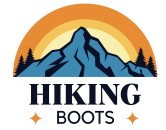
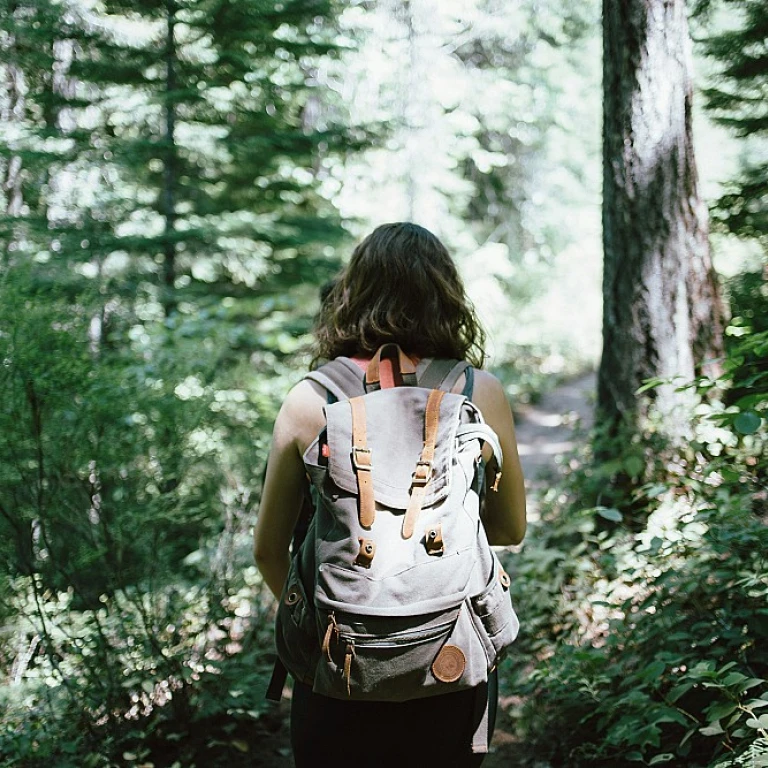
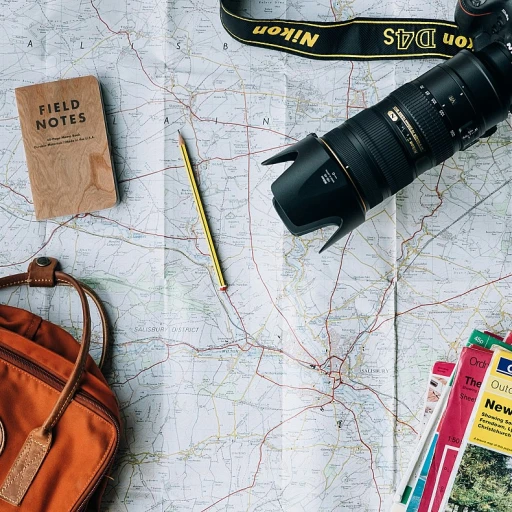
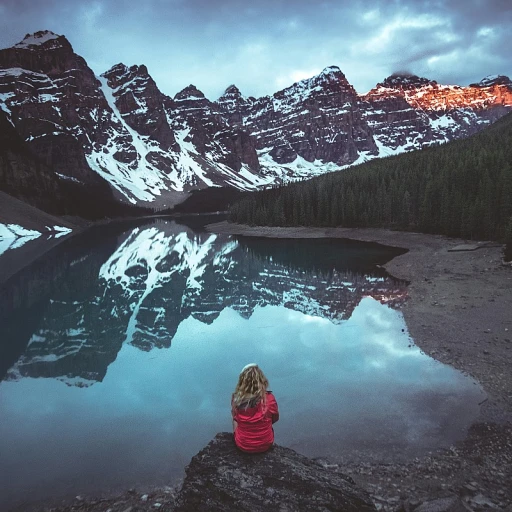

-large-teaser.webp)
